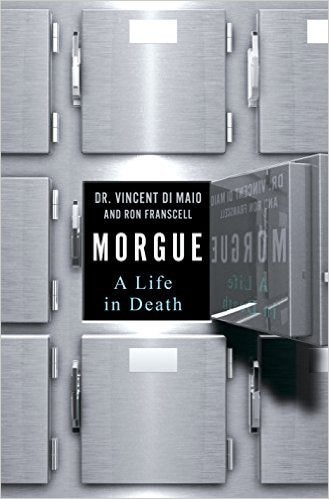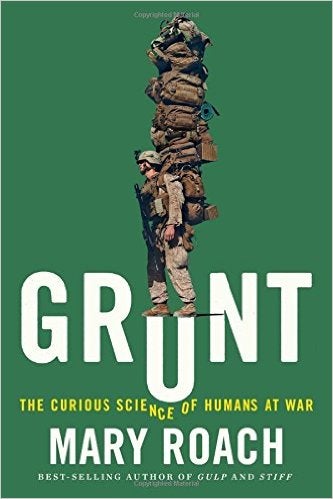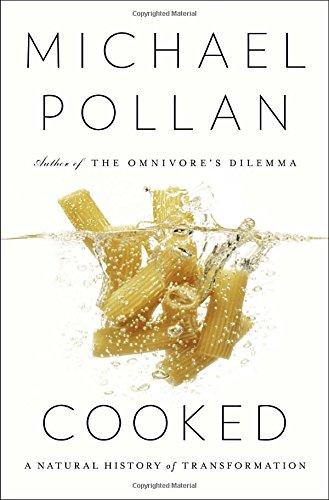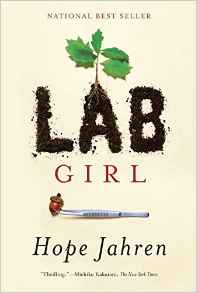New Popular Reading Books at Laupus!
Check out the latest additions to our Popular Reading Collection!
By Vincent J.M. Di Maio and Ron Franscell
 From Publisher: “Beginning with his street-smart Italian origins in Brooklyn, the book spans 40 years of work and more than 9,000 autopsies, and Di Maio’s eventual rise into the pantheon of forensic scientists. One of the country’s most methodical and intuitive criminal pathologists will dissect himself, maintaining a nearly continuous flow of suspenseful stories, revealing anecdotes, and enough macabre insider details to rivet the most fervent crime fans.”
From Publisher: “Beginning with his street-smart Italian origins in Brooklyn, the book spans 40 years of work and more than 9,000 autopsies, and Di Maio’s eventual rise into the pantheon of forensic scientists. One of the country’s most methodical and intuitive criminal pathologists will dissect himself, maintaining a nearly continuous flow of suspenseful stories, revealing anecdotes, and enough macabre insider details to rivet the most fervent crime fans.”
Grunt: The Curious Science of Humans at War
By Mary Roach
 From Publisher: “‘Grunt’ tackles the science behind some of a soldier’s most challenging adversaries–panic, exhaustion, heat, noise–and introduces us to the scientists who seek to conquer them.”
From Publisher: “‘Grunt’ tackles the science behind some of a soldier’s most challenging adversaries–panic, exhaustion, heat, noise–and introduces us to the scientists who seek to conquer them.”
Smoke Gets in Your Eyes and Other Lessons from the Crematory
By Caitlin Doughty
From Publisher: “An intimate look at the latest neuroscience of schizophrenia, autism, Alzheimer’s disease, ecstatic epilepsy, Cotard’s syndrome, out-of-body experiences, and other conditions—revealing the awesome power of the human sense of self.
Extensive in-depth interviews venture into the lives of individuals who offer perspectives that will change how you think about who you are. These individuals all lost some part of what we think of as our self, but they then offer remarkable, sometimes heart-wrenching insights into what remains. One man cut off his own leg. Another became one with the universe.”
Bad Girls at Samarcand: Sexuality and Sterilization in a Southern Juvenile Reformatory
By Karin Lorene Zipf, ECU Author

From Publisher: In Bad Girls at Samarcand, Karin L. Zipf dissects a dark episode in North Carolina’s eugenics campaign through a detailed study of the State Home and Industrial School in Eagle Springs, referred to as Samarcand Manor, and the school’s infamous 1931 arson case. The people and events surrounding both the institution and the court case sparked a public debate about the expectations of white womanhood, the nature of contemporary science and medicine, and the role of the juvenile justice system that resonated throughout the succeeding decades.”
Cooked: A Natural History of Transformation
By Michael Pollan
 From Publisher: “In Cooked, Michael Pollan explores the previously uncharted territory of his own kitchen. Here, he discovers the enduring power of the four classical elements—fire, water, air, and earth—to transform the stuff of nature into delicious things to eat and drink. Apprenticing himself to a succession of culinary masters, Pollan learns how to grill with fire, cook with liquid, bake bread, and ferment everything from cheese to beer. Each section of Cooked tracks Pollan’s effort to master a single classic recipe using one of the four elements.”
From Publisher: “In Cooked, Michael Pollan explores the previously uncharted territory of his own kitchen. Here, he discovers the enduring power of the four classical elements—fire, water, air, and earth—to transform the stuff of nature into delicious things to eat and drink. Apprenticing himself to a succession of culinary masters, Pollan learns how to grill with fire, cook with liquid, bake bread, and ferment everything from cheese to beer. Each section of Cooked tracks Pollan’s effort to master a single classic recipe using one of the four elements.”
By Hope Jahren
 From Publisher: “Acclaimed scientist Hope Jahren has built three laboratories in which she’s studied trees, flowers, seeds, and soil. Her first book is a revelatory treatise on plant life—but it is also so much more. Lab Girl is a book about work, love, and the mountains that can be moved when those two things come together. It is told through Jahren’s remarkable stories: about her childhood in rural Minnesota with an uncompromising mother and a father who encouraged hours of play in his classroom’s labs; about how she found a sanctuary in science, and learned to perform lab work done “with both the heart and the hands”; and about the inevitable disappointments, but also the triumphs and exhilarating discoveries, of scientific work.”
From Publisher: “Acclaimed scientist Hope Jahren has built three laboratories in which she’s studied trees, flowers, seeds, and soil. Her first book is a revelatory treatise on plant life—but it is also so much more. Lab Girl is a book about work, love, and the mountains that can be moved when those two things come together. It is told through Jahren’s remarkable stories: about her childhood in rural Minnesota with an uncompromising mother and a father who encouraged hours of play in his classroom’s labs; about how she found a sanctuary in science, and learned to perform lab work done “with both the heart and the hands”; and about the inevitable disappointments, but also the triumphs and exhilarating discoveries, of scientific work.”
This is Your Brain on Parasites: How Tiny Creatures Manipulate Our Behavior and Shape Society
By Kathleen McAuliffe
 From Publisher: “These tiny organisms can only live inside another animal, and as McAuliffe reveals, they have many evolutionary motives for manipulating their host’s behavior. Far more often than appreciated, these puppeteers orchestrate the interplay between predator and prey. With astonishing precision, parasites can coax rats to approach cats, spiders to transform the patterns of their webs, and fish to draw the attention of birds that then swoop down to feast on them.”
From Publisher: “These tiny organisms can only live inside another animal, and as McAuliffe reveals, they have many evolutionary motives for manipulating their host’s behavior. Far more often than appreciated, these puppeteers orchestrate the interplay between predator and prey. With astonishing precision, parasites can coax rats to approach cats, spiders to transform the patterns of their webs, and fish to draw the attention of birds that then swoop down to feast on them.”
